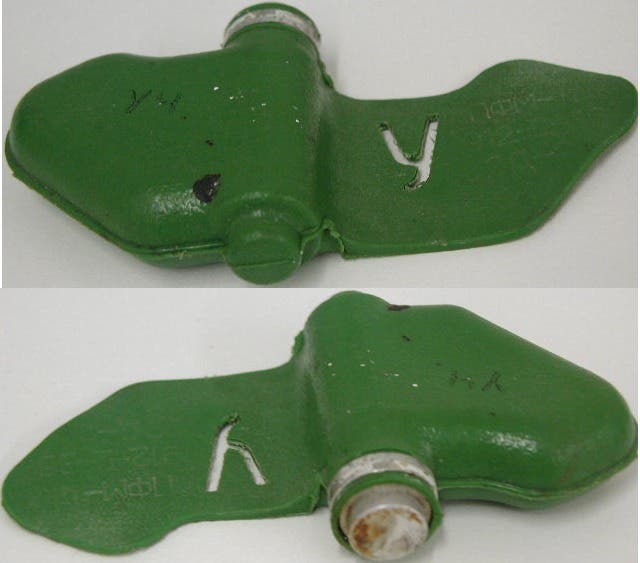Somebody should make a game about: landmines
Nobody knows exactly how many landmines there are in the ground right now, but the answer is in the tens of millions.
Content warning: This piece contains a discussion of war casualties, including children.
Nobody knows exactly how many landmines there are in the ground right now, but the answer is in the tens of millions. Each year those mines kill or injure thousands of people - 6,897 in 2018, or around 18 people a day, of whom 71 percent were civilians. At least a million have died since record-keeping began, with hundreds of thousands left mutilated, and many more deaths undocumented. According to the Landmine Monitor 2019 report, 59 states remain contaminated by mines, with concentrations spanning over a hundred square kilometres in wartorn countries like Afghanistan and Iraq. Some of these mines are ancient, relics of conflicts that ought to be fading memories. Others are fresh in the soil.
Governments have made impressive strides towards getting rid of mines, which are widely perceived to be an uncommonly evil weapon. 164 states have signed the 1997 Mine Ban Treaty, of which 31 have now cleared their territory of mines completely. But many countries retain huge stockpiles, including China, Russia and the USA, which this January announced that it would reverse Obama-era prohibitions on mine usage. The Trump administration's justification is that it will only deploy mines that self-deactivate or destruct after a given period, but these technologies are unreliable, and in any case, mines blowing themselves up according to an invisible schedule isn't brilliant news for those nearby.

Even when undetonated, mines profoundly alter everyday life in the regions they infest, long after hostilities have cooled. Arable land becomes unusable. Wells can't be dug. Scavenging, foraging and walking to market are a gamble. Towns are cut off from healthcare providers even as diseases spread. Landmine survivors in poorer countries seldom get the care they need: unable to work and shunned by their communities, many end up on the street. Most minefields are unmarked. Once upon a time, militaries would draw up maps and fence deployments off, because mines were supposed to be a deterrent rather than a means of slaughter, but according to the International Campaign to Ban Mines, the trend since the World Wars has been to sow them indiscriminately, especially when deploying from air. Some belligerents actively target civilian areas, using mines as a weapon of terror.
Mines are particularly effective at killing children. Partly, this is because children are smaller, their vital organs located closer to the ground (according to the ICBL, many anti-personnel mines are designed to maim rather than kill, the logic being that an injured soldier is more of a drain on enemy resources than a dead one). But it's also because children are curious about the world - eager to learn, and fond of messing around with the objects they find, especially objects that seem a little off, a little out of place. It doesn't matter that this desire to explore and tinker is their birthright under UN statute. For parents and educators in regions that harbour mines, this is an openness that must be carefully folded back on itself, as though coaxing a foot into a shoe.
The UNHCR has issued teaching materials for children who live near mines, which discuss when to encourage and when to discourage a child's childishness. Educators might try to make a game out of avoiding them - the game of retracing your steps exactly in your own footprints, for example, providing the ground isn't so hard that your footprints are illegible. Simply forbidding children from going near minefields can be counterproductive, because forbidden places are enticing. Giving children replicas of mines to learn about is also unwise, as this may acclimatise them to handling the weapons or worse, teach them to see mines as playthings. Some mines could almost have been made with this in mind. According to the historian Stephen Tanner, the Russian-made PFM-1 "butterfly" mine (pictured above) has killed an enormous number of Afghan kids because it actually looks like a toy.

Mines are everywhere in videogames - until recently every Windows PC came with a copy of Minesweeper, the definitive desktop distraction, pre-installed - but I've yet to play a game that really gives them any thought. This throws me a bit, because even military-themed action blockbusters can be surprisingly ready to turn a critical eye on other types of weapon, if only for the sake of edginess. Call of Duty: Black Ops 2 portrays itself as a cautionary tale about automated warfare. Spec Ops: The Line tolls the callousness of incendiary munitions. There's an entire genre dedicated to the poisonous legacy of the nuclear bomb. Mines are designed to rebuff this kind of scrutiny, I guess, the magpie tendencies of children notwithstanding. The whole point is that you're supposed to forget about them.
In single player games, mines are pace-changers and navigational devices, ways of obliging the player to slow down or take the long way round. They are usually easy to spot, advertising themselves with a rising beep or a blinking light, and disarmed by holding a button. They're harder to detect in multiplayer shooters - players, unlike level designers, aren't obliged to give each other a sporting chance - but they also go away at the match's end, clearing the deck for another war. You don't get any sense of what it's like to live amongst them, day to day. Art isn't required to imitate life, and I doubt a “realistic” landmine game would be much comfort to those who've lost limbs and loved ones to these weapons. All the same, I'd like to play a game that takes landmines seriously.









